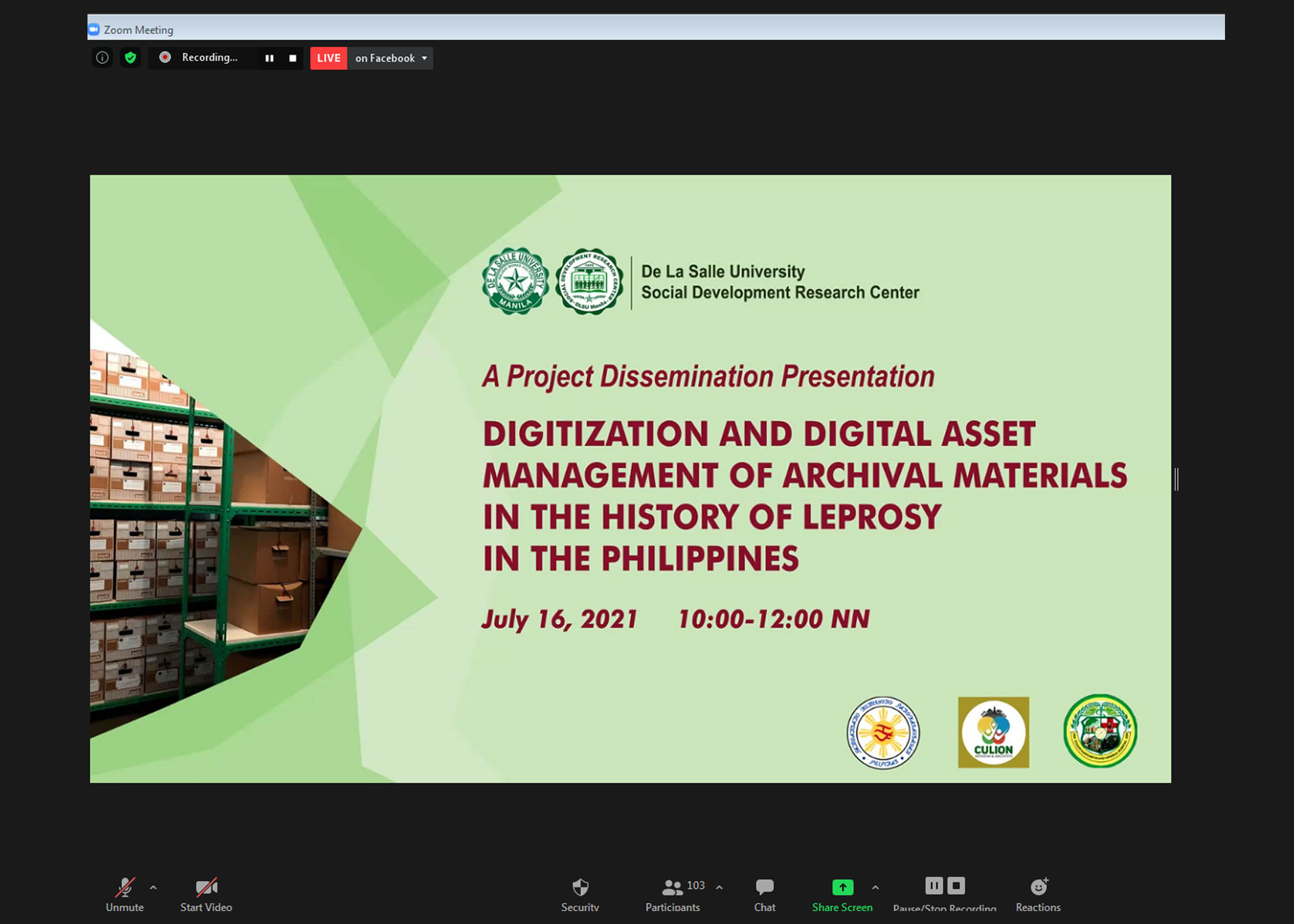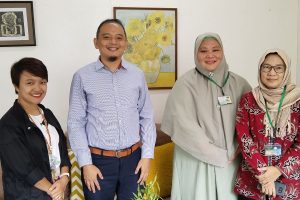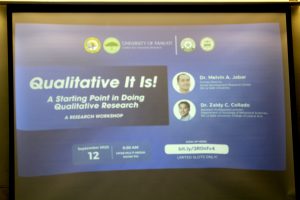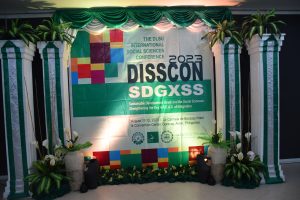From Dreaded Disease to National Treasure: Digital Steps toward Preserving the Story of Leprosy
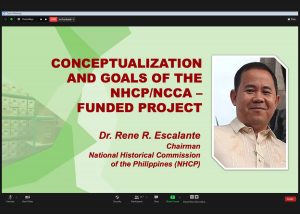 “When we hear about Palawan, normally what comes to mind are beautiful beaches, Amanpulo, Busuanga. Unknown to many, we can also find the old leprosarium there, previously the biggest in the history of the world.”
“When we hear about Palawan, normally what comes to mind are beautiful beaches, Amanpulo, Busuanga. Unknown to many, we can also find the old leprosarium there, previously the biggest in the history of the world.”
With this reminiscence, National Historical Commission of the Philippines Chair Dr. Rene Escalante provided context for the recently concluded SDRC study “Digitization and Digital Asset Management of Archival Materials in the History of Leprosy in the Philippines” during a dissemination held on July 16 via Zoom and Facebook Live. The study was led by a project core team composed of SDRC senior research fellow Dr. Ma. Elena Chiong-Javier, Center Director Dr. Melvin Jabar, archivist and former DLSU co-academic personnel Ms. Florbella Bongalos, and Computer Technology Department associate professor Dr. Joel Ilao. It primarily sought to assist the NHCP in prolonging the life of the Culion Museum and Archives (CMA)’s archival materials and in providing ease of access to users through the conversion of physical materials to digital files.
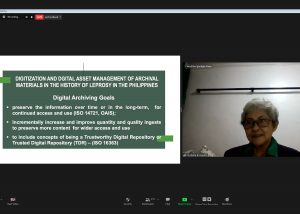 Vice Chancellor for Research and Innovation Dr. Raymond Tan opened the event, noting how the four decades of research conducted at SDRC depicted an evolution in the kind of work it has done, all the way up to the modern age of the Internet. He acknowledged the digitization of the CMA holdings as a milestone, in that it ensured the accurate transfer of knowledge, preservation for posterity, and easy access for future reference. He lauded the team for its expertise in archiving practices and information technology in documenting this chapter of the country’s medical history.
Vice Chancellor for Research and Innovation Dr. Raymond Tan opened the event, noting how the four decades of research conducted at SDRC depicted an evolution in the kind of work it has done, all the way up to the modern age of the Internet. He acknowledged the digitization of the CMA holdings as a milestone, in that it ensured the accurate transfer of knowledge, preservation for posterity, and easy access for future reference. He lauded the team for its expertise in archiving practices and information technology in documenting this chapter of the country’s medical history.
Highlights of the dissemination were the presentations on the project’s two components. The first, delivered by Ms. Bongalos, involved the digital archiving process, which ensured that the digital conversion of the physical archival materials adhered to the Open Archival Information System (OAIS) following international standards for quality of digitization and digital asset management. In the second presentation by Dr. Ilao together with DAMS team members Courtney Anne Ngo, Christine Diane Ramos and Cedric John Cruz, the Digital Asset Management System was discussed, from its conceptual framework to systems refinement, and the training provided for the Culion Sanitarium and General Hospital (CSGH) and CMA staff on how to use the System, prior to turnover.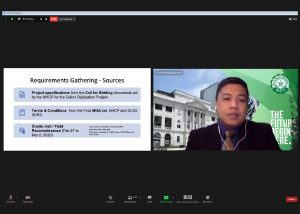
During the open forum facilitated by Dr. Jabar, participants showed a marked interest in the practice of digital archiving. Among the queries addressed by Ms. Bongalos were whether digital archiving would reduce paperwork, whether private and public offices are encouraged to have their own archival management, how to ensure that digital data will last a long time, whether digitized copies of CMA’s materials are available for the public to access, whether data archiving fulfills auditing requirements, what equipment is needed to start an archive, and whether there is a training or course program on archiving. Dr. Ilao likewise responded to questions regarding why PDF was not used as circulation copies of digitized documents, how data is protected from being hacked or from any breach of security, where digital copies of documents can be stored for safe keeping, and whether there are personal archives in the CMA collection.
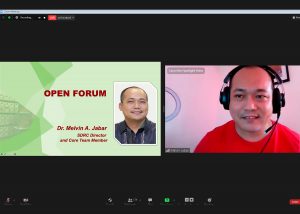 Dr. Chiong-Javier concluded the dissemination by discussing how the team was able to make the “Gargantuan hurdle” of meeting the myriad challenges it faced in conducting the study, specifically in accomplishing the project’s tasks during the pandemic with its lockdowns and travel restrictions. She further cited the non-pandemic related limitations of scanning equipment and the unexpectedly voluminous amount of work that was required to be completed within a six-month schedule.
Dr. Chiong-Javier concluded the dissemination by discussing how the team was able to make the “Gargantuan hurdle” of meeting the myriad challenges it faced in conducting the study, specifically in accomplishing the project’s tasks during the pandemic with its lockdowns and travel restrictions. She further cited the non-pandemic related limitations of scanning equipment and the unexpectedly voluminous amount of work that was required to be completed within a six-month schedule.
The recommendations arrived at by the team for the archives component were to have a long-range plan for archival digital preservation and to look into the standards and best practices of advanced countries to serve as benchmarks for the CMA; and for the DAMS component were for the archives appraisal activity to be strictly completed prior to the system development activity, for a longer timeline be provided for system development to allow for more refined needs analysis and planning, and for provisions and budget for technical support to be added in the Memorandum of Agreement.
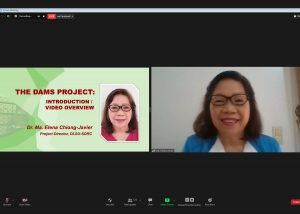
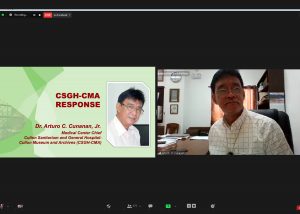 In his response to the project dissemination, CSGH-CMA Medical Center Chief Dr. Arturo C. Cunanan, Jr. shared that “the pioneering project is a dream come true.” He noted that while CMA’s goal was to preserve, maintain and continuously collect materials and make them accessible to scientists, social scientists, relatives and families of patients who had been isolated in Culion, its major contribution was removing the stigma and discrimination experienced by those who had been affected by the disease. He expressed his hope that there would be continuing partnerships to address archival interests, especially in terms of international classifications.
In his response to the project dissemination, CSGH-CMA Medical Center Chief Dr. Arturo C. Cunanan, Jr. shared that “the pioneering project is a dream come true.” He noted that while CMA’s goal was to preserve, maintain and continuously collect materials and make them accessible to scientists, social scientists, relatives and families of patients who had been isolated in Culion, its major contribution was removing the stigma and discrimination experienced by those who had been affected by the disease. He expressed his hope that there would be continuing partnerships to address archival interests, especially in terms of international classifications.
College of Liberal Arts Dean Dr. Rhoderick Nuncio closed the event by acknowledging that the efforts in the preservation of the Culion Museum and Archives materials were part of the long history of leprosy in the country. He lauded the initiative as a meeting of history and technology, and as a milestone in the documentation of local culture, conveying his hope for future collaborations in public health services and development programs.


